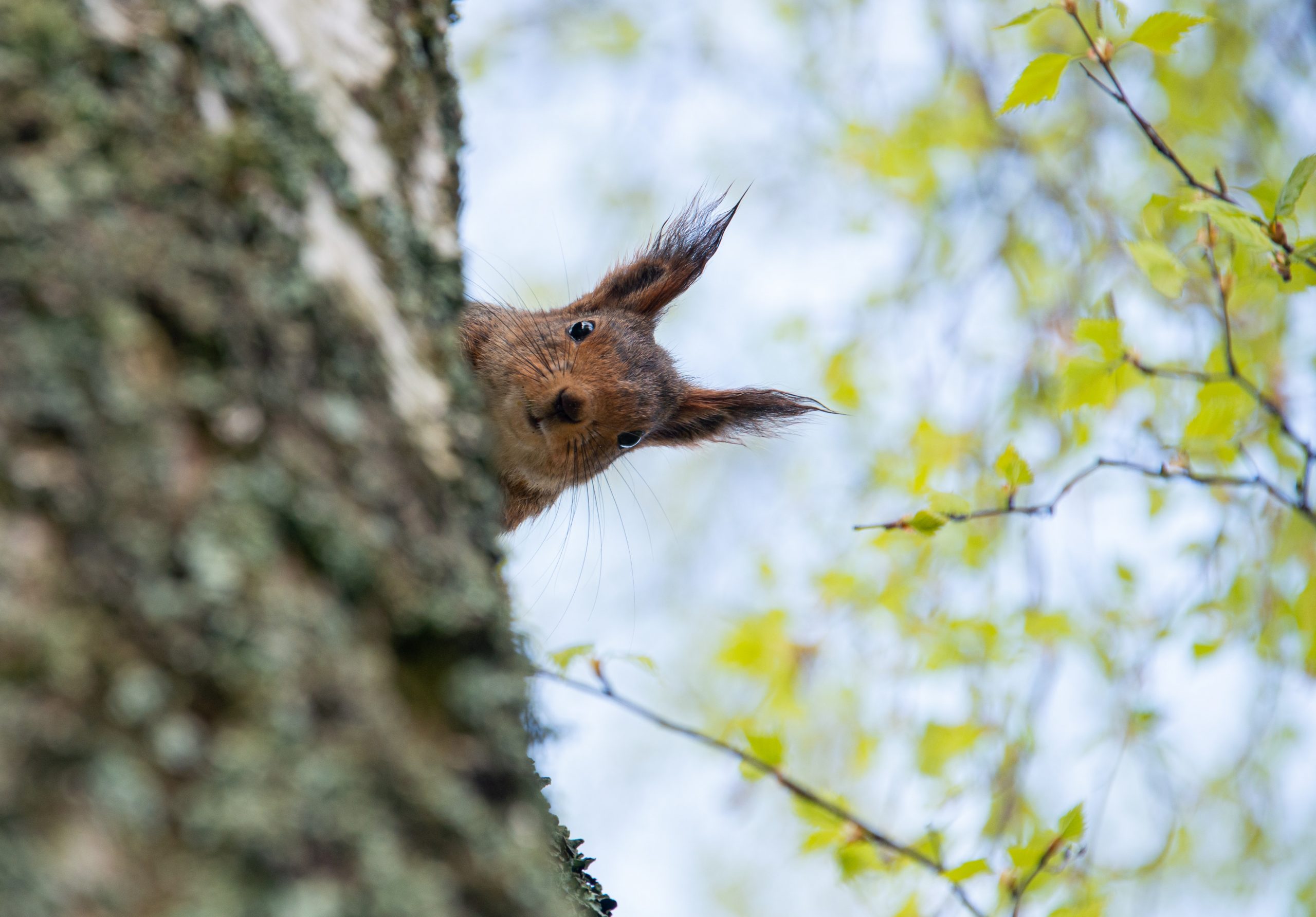
Squirrel Removal
For Immediate Help
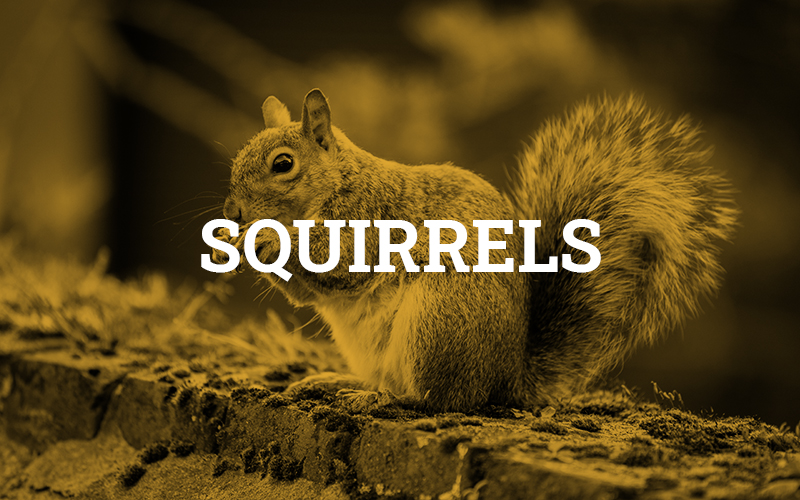
If you’re dealing with unwanted squirrels in your attic, walls, or around your property, you’re not alone—squirrel infestations are some of the most common infestations homeowners in Canada experience. These agile rodents can cause severe damage to insulation, wiring, and structural elements, as well as pose health risks from their droppings and parasites.
Our professional squirrel removal service is designed to safely and humanely evict these intruders, seal off entry points, and help you prevent future infestations. With years of experience in nuisance wildlife removal, we’re here to protect your home and peace of mind.
Squirrel Control
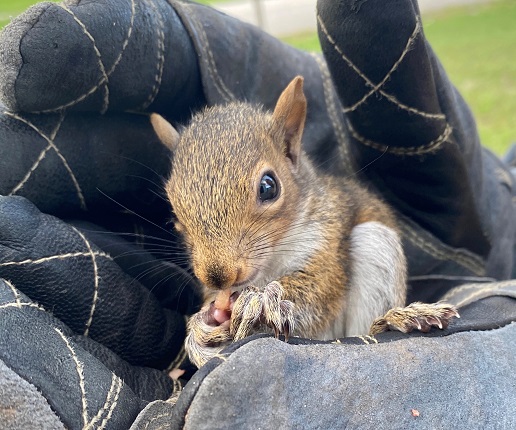
Squirrels typically enter a home to find a safe place to give birth or to seek shelter from winter. When you need to get rid of squirrels, humane trapping, one-way doors, or deterrents are needed.
Inspection
Typical signs of a squirrel infestation include signs of chewing on, in, or around your home, smaller openings leading to the attic or crawl space, squirrel droppings, and debris like nuts or nesting material.
Squirrel Removal Process
Squirrel trapping is the most effective method to remove squirrels. We will not direct capture an adult squirrel, but if juvenile squirrels are present, we will hand remove and reunite with the mother squirrel. One-way doors and deterrents are also a viable removal strategies.
Exclusion and Repair
Exclusion services are the most effective long-term solution to squirrels. It is essential to seal all entry points, buttress any potential entry points, and install rodent-proof material.
Signs of Squirrels in the House
Squirrels are excellent climbers and can easily gain access to your roof. If there are any weak spots, squirrels can gnaw their way inside. Attics, wall cavities, soffits, eaves, crawlspaces, and chimneys resemble a squirrels’ natural nesting location (tree hollows). While cute, they are noisy, destructive, and can spread diseases.
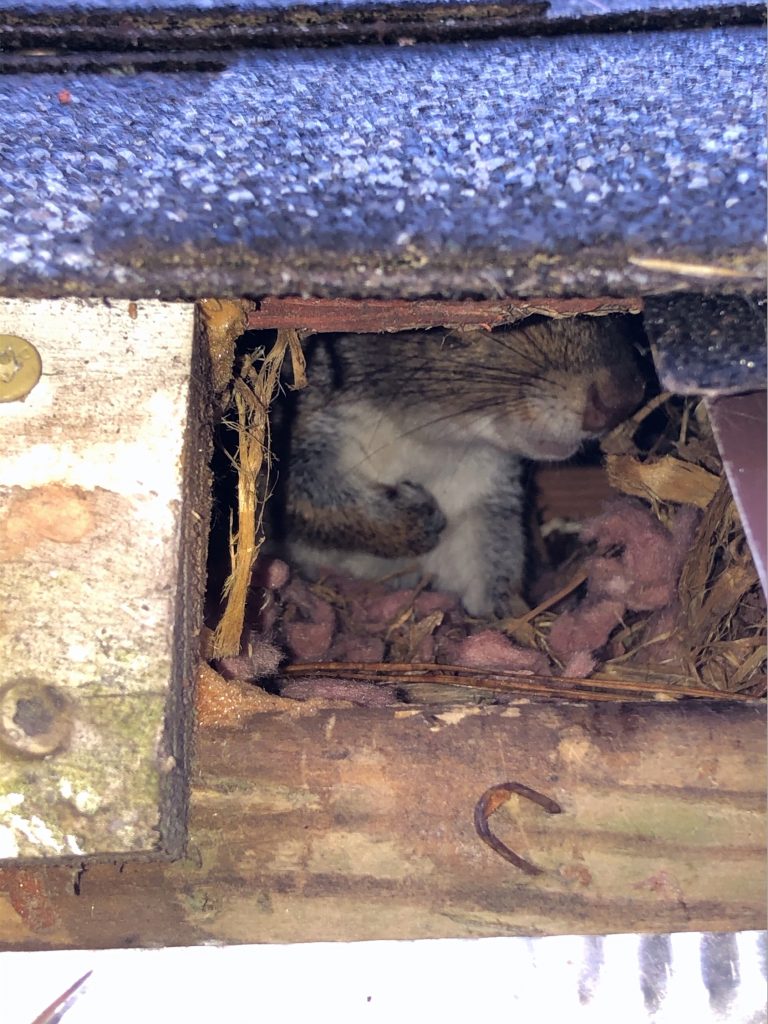
Squirrel Sounds & Noises
Squirrels are noisy. Tree squirrels are diurnal, and you will hear them early in the morning scampering and running. Flying squirrels are nocturnal and communal. You’ll hear similar noises at night.
Vocal Noises
They have a wide range of vocal features, including squeaks, barks, and grunts. When distressed, baby squirrels make high-pitched, chirping noises like birds.
Movement Noise
Squirrels make scratching noises and can be heard running around in attics and wall voids. Squirrels are constantly gnawing on objects, which can produce repeated scraping or rubbing sounds.
Squirrel Droppings
Squirrel droppings are similar in size to jellybeans or raisins and range from 5 to 8 mm in length. They usually get scattered about as the rodents run and easily blend in with the soil due to their light brown coloration. As tree-dwelling creatures, squirrels often use hollow crevices in tree trunks as toilets. Droppings are generally pill-shaped and cylindrical in appearance, sometimes with tapered ends.
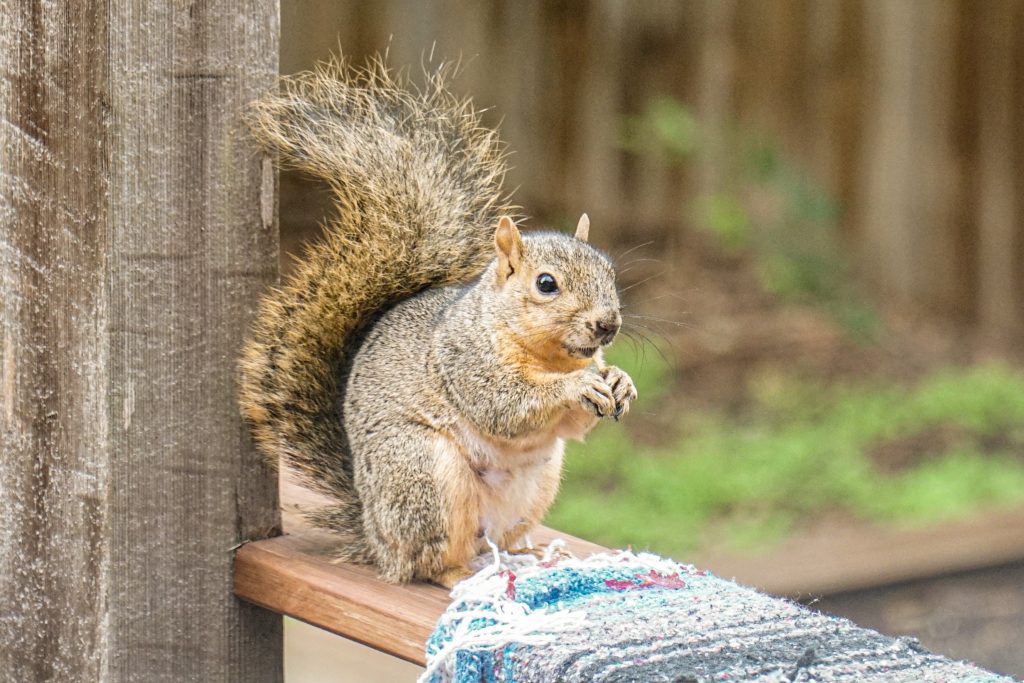
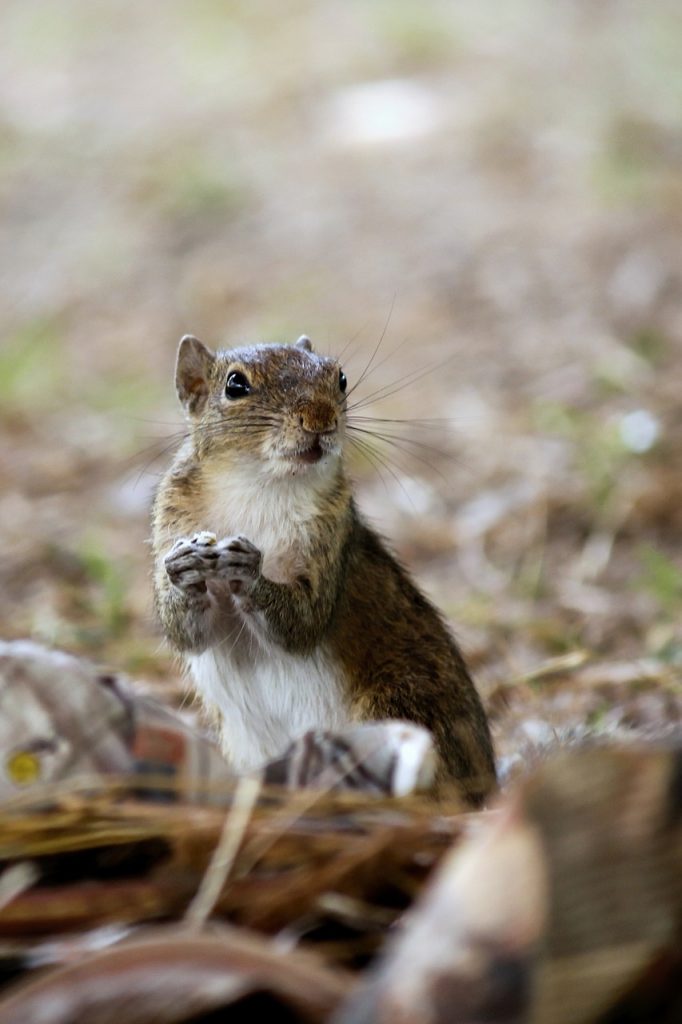
Squirrel Tracks
Squirrel tracks are relatively small at about two inches in length. The front paws have four narrow toes tipped with tiny claws. A squirrel’s larger rear paws also feature five distinct toes with a large pad at the heel.
Squirrel Concerns
Squirrels can cause damage to your home and spread diseases.
Squirrel Damage

Squirrels can create extensive damage to the exterior and interior of your home. Squirrels can squeeze through a hole the size of a golf ball. If they can’t find a gap large enough, they can gnaw their way inside
Squirrels can gnaw through soffits, fascia boards, siding, wood, metal, and shingles to gain access to your attic. Once inside your home, squirrels damage attics by constantly gnawing, ripping up insulation, and defecating in the attic.
Squirrels will make nests in chimneys or attics if they’re able to gain access to your property. Squirrels are a threat to the structural integrity of your property as well as any electrical wiring. In addition to causing building damage, squirrels are capable of spreading disease through their waste.
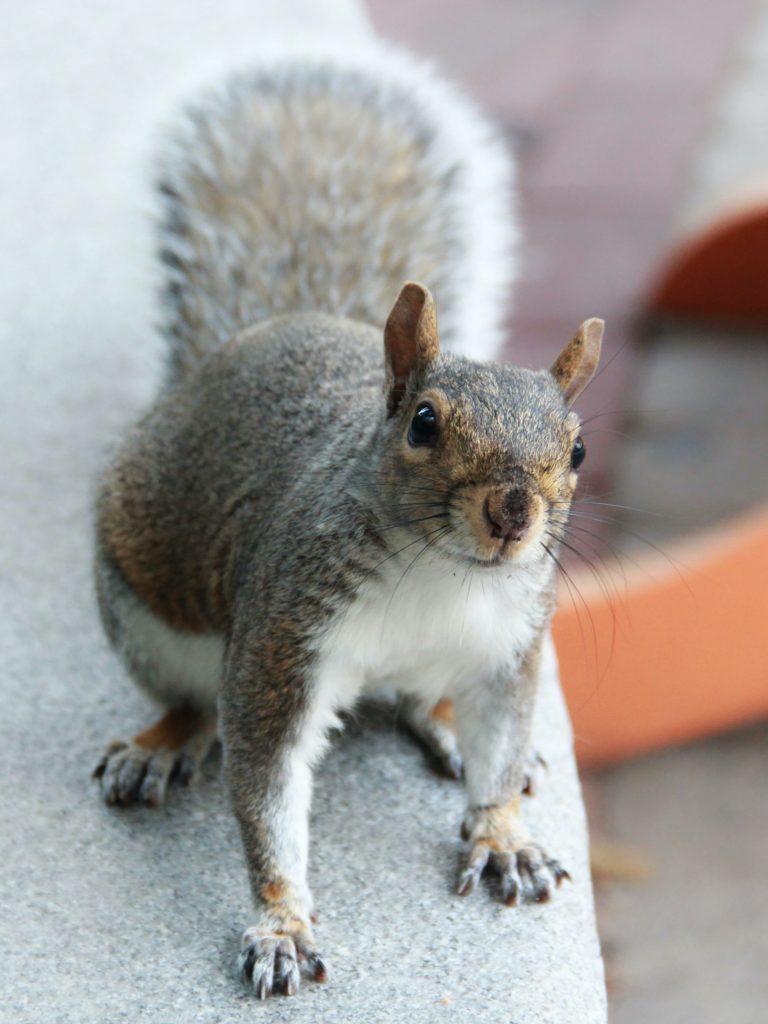
Squirrel Diseases
Squirrel droppings can also harm your health. Mold and fungus can grow in their droppings. Diseases like leptospirosis and Salmonellosis are spread via animal waste. Finally, ectoparasites like fleas, ticks, bed bugs, and chiggers introduced by a wild animal can spread diseases to you and your family.
What Our Clients Say About Us
Frequently Asked Questions
How much does it cost to remove a squirrel?
There are a number of factors that determine squirrel removal cost like where the squirrels are, how many squirrels there are, and what the condition of the property is.
Are squirrels harmful to humans?
A squirrel in its natural habitat poses very little threat to a human. When a squirrel lives in your home, it can spread diseases and damage your house.
What is the most effective squirrel repellent?
There are two main methods people use to repel these rodents: chemical or natural. Applying these products effectively is difficult. Residents need to use the perfect amount in the right spot to have any hope of controlling squirrel infestations. Eventually, these repellents do wear off.
How do you keep squirrels away from your house?
Trim any branches that hang over or near your house. If you have a bird feeder, install squirrel deterrents on it. Keep your yard tidy.
Does Critter Control exterminate squirrels?
It is in our mission statement to treat animals ethically and humanely. We use only humane trapping and prevention services. The goal of our exclusion services is to prevent not kill. Each province has its own laws that dictate what we must do when it comes to controlling wildlife on your property.
How do you get rid of squirrels?
It is important to identify all current and potential future entry points around the home. The identified openings should be repaired or reinforced to prevent future problems.